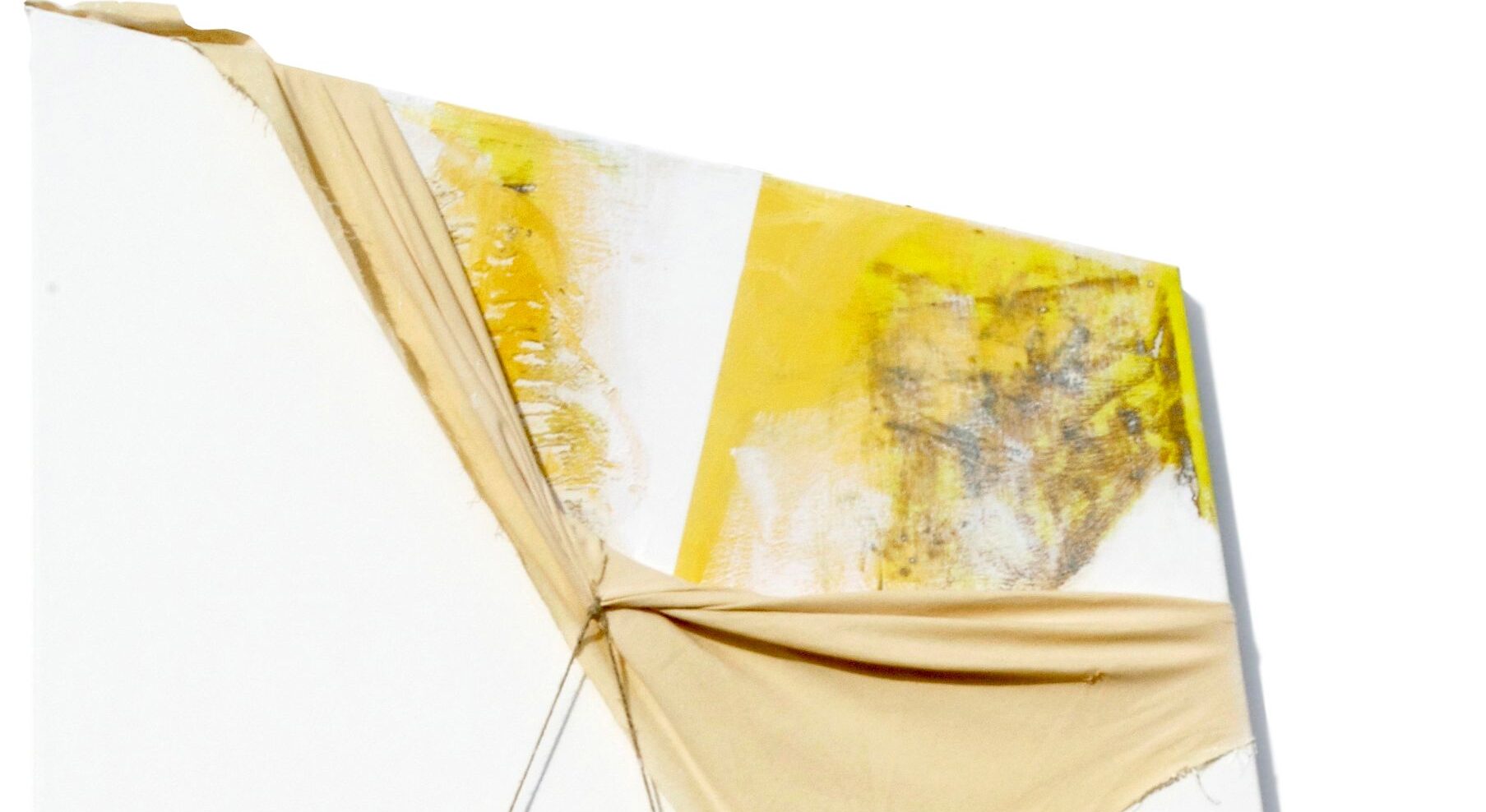Vincent Serbin: Like skin

LIKE SKIN
PHOTOGRAPHER VINCENT SERBIN’S TRANSITION TO PAINTING IN NEW SOLO EXHIBITION
STAMFORD, CT — The Fernando Luis Alvarez Gallery is proud to announce its representation of artist Vincent Serbin whose upcoming solo exhibition opens Saturday, April 8th from 6 to 9 pm. For this exhibition, Serbin’s latest series of canvas works explore a new medium and technique for the artist, whose career began by developing a unique method of photomontage (what he calls the “negative collage”). Though spanning decades, that of the last 12 years is dedicated to investigating the materiality of his medium. His approach to painting began with an interest in how abstract forms are created and the effect their features have on a determined space. He is interested in pursuing work that is non-pictorial, and free of both cultural context and illusionistic representations. Influenced by the avant-garde strategies of artists such as Robert Ryman, Alberto Burri, and Frank Stella, Serbin is interested in the process of art than in its material realization. The series of works are a continuation of this development, wherein the artist has painted abstract canvases of varying sizes and shapes that are then covered over. Ropes and twine pull at the edges and folds making the covering take on an almost skin-like aesthetic. This process of concealing and revealing is described by the artist as an “evolutionary adventure.” Having started his career in photographic collage (wherein he had to literally cut and reform his photographs), this collection appears to be a progression from that. Each work gives the corporeal effect of the canvas that conceals and reveals various aspects of the painting behind it as if these spaces are incisions in the skin. “Serbin’s work evokes a bodily response,” says Fernando Luis Alvarez. “It is this physical component that becomes most engaging, almost as if the material is in stress to reveal itself”. The work represented in the exhibition appears as a cohesive collection but can be split into four distinct phases of the artist’s evolution with his materials. Works in phase one display a process Serbin calls “countershading,” wherein he has juxtaposed hard-edge fields of shaded color with organic areas of layered paint that have been distressed by power sanding. The term countershading was inspired by a type of camouflaged coloring in the animal kingdom. Phase two employs the use of shrouds, wrappings, and sewn canvas that are stretched over a sub-painting. This aspect of the collection is further enhanced by the use of shaped canvases. Serbin believes that “a non-rectangular frame creates a space that is far more compelling than the pedestrian rectangle. The shaped piece is a self-referential object that is present in the world, yet does not depict the world. It is not a ‘window of reality.’” Phase three introduced the use “tie backs,” in which Serbin uses pieces of twine or cord to pull back sections of the top layer of canvas to reveal areas of the sub-painting. During this period, Serbin became interested in the notion that “what is withheld can be as potent as what is disclosed.” In phase four, the most current phase that the artist is embroiled in, Serbin further advances the concept of non-rectangular works by joining two standards, rectangular canvases in a manner that creates a non-rectangular shape. There is a sense of irony in these constructions because the standard rectangle is employed in the creation of a non-rectangular object. In this series, he continues the practice of covering the paintings and exposing areas with tie backs. Thus, these works are referred to as the “double tie-backs.” Serbin is the latest artist to be represented by the Fernando Luis Alvarez Gallery. He has exhibited extensively around the US including recent exhibitions at the University of Texas and at Pirate Contemporary Art in Denver. His photo works have been widely exhibited and collected by private individuals and institutions such as The Museum of Photographic Arts, The University of Maine Art Museum, and the Museet for Fotokunst, in Denmark.